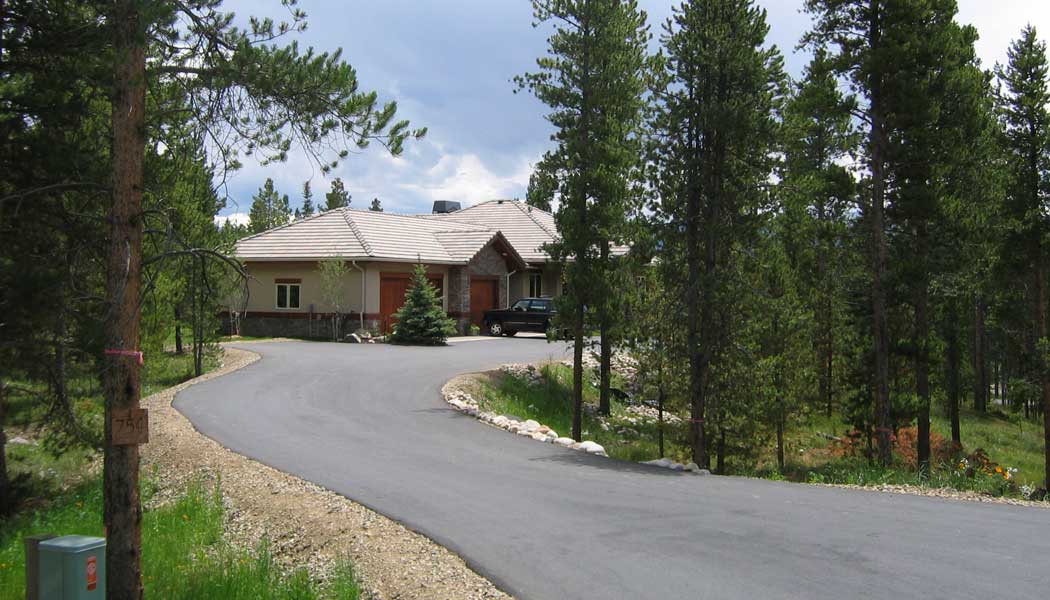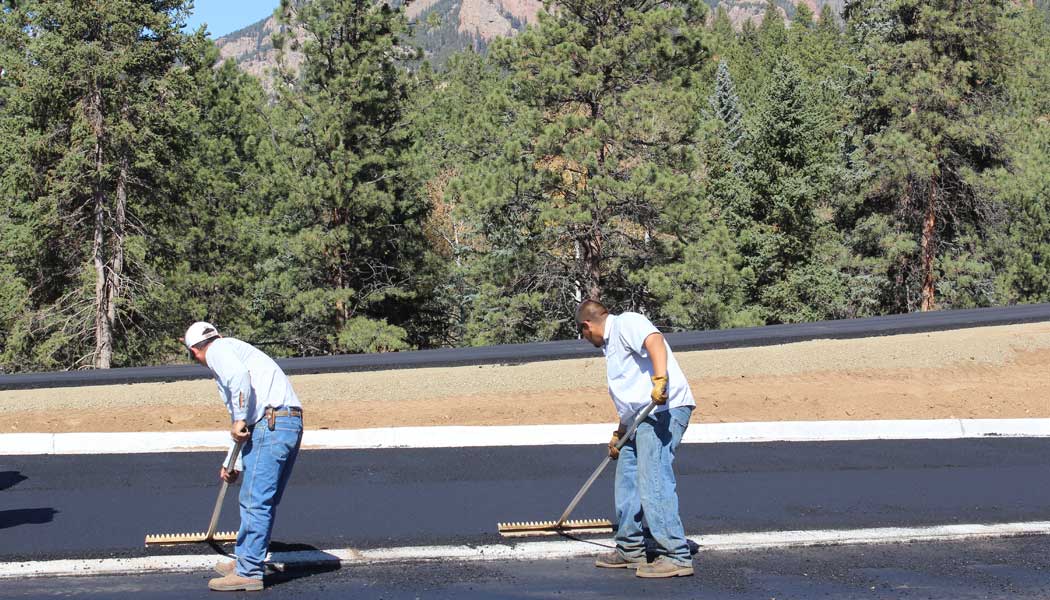
Taking Care of Your New Asphalt Driveway in the First 12 Months
Congratulations on your new asphalt driveway. We are pleased that you have chosen us as your paving contractor and confident that these facts and recommendations will answer all your questions for a longer lasting driveway.
Avoid Driving on Initially
Avoid driving on new asphalt initially. Since the liquid asphalt needs time to fully harden and
cure, usually 6-12 months, your driveway will remain soft and pliable until then. You may walk on your new driveway immediately. You may drive over your driveway after 1 day, but do not park on it for 3 days and possibly longer in hotter temperatures. Even after the blacktop has cured, do not expect it to be as hard as concrete.
Try to avoid turning your steering wheel while not moving. During the initial cure, the asphalt is very tender and susceptible to scuff marks and scarring. These marks do not affect the structural integrity of your driveway and are just cosmetic.
Your new driveway will soften and harden as temperatures rise and fall. Watering down your driveway with a hose on hot days will cool and temporarily harden the driveway. Although every effort is made to avoid puddles in your driveway, some small ones are inevitable depending on the natural slope and drainage of your ground.
Fluids to Avoid
Avoid gasoline, oil, anti-freeze, power steering and transmission fluid spills and leaks. These will dilute the liquid asphalt in your driveway. Any holes left by these spills should be filled with cold patch. Expansion and contraction cracks are unavoidable in mountain climates where weather changes are extreme. Any hairline cracks that may have developed over the winter due to the contraction and expansion of the ground should be filled with crack filler.
Park In A Different Spot
During the first 6-12 months while your driveway is curing do not park in the same spot every time. Please do not be concerned with tire marks caused by power steering (especially in confined back-up areas). They are just cosmetic marks.
Asphalt Texture May Vary
Your driveway may look smoother in some areas than in others because of the makeup of asphalt. Asphalt has various sizes of stone, sand, liquid asphalt, and other ingredients which cause a varied texture of the surface. Also, asphalt areas that have been raked and spread with hand tools may appear different in texture from those spread by machine.
No Excessive Weight
Keep excessive weight off new asphalt. Excessive weight from large heavy vehicles can depress your new driveway. Keep any heavy trucks off your new driveway. When storing campers or boats for long periods of time, place a piece of plywood under the tongue jack and under the tires.
Lawn chairs, barbecue’s, bicycle, and motorcycle kickstands exert weight on concentrated areas and will create holes and depressions in your new driveway, especially in hot weather.
Avoid New Driveway Edges
The edges are the weakest part of your driveway due to the lack of side support. Avoid driving on the edges since they will crack and crumble in time.
Preserve Your Driveway with Sealer
Apply a seal coating one year after the asphalt has been applied and then every 2-3 years thereafter. Unprotected driveways remain porous, dry out, become rough, and lose their life rapidly.

Have a project you would like to speak to us about?
Questions or
Concerns?
If you have any other questions, please do not hesitate to call our office at (303) 427-0550.
Contact Us
Phone: (303) 427-0550
7100 N. Broadway, Ste. 2PPH, Denver, CO 80221
www.newwestpaving.com
